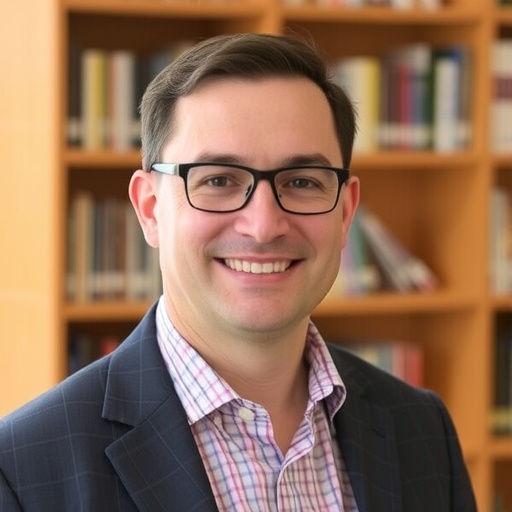In an era where information travels at lightning speed across digital landscapes, the mechanisms by which ideas spread and evolve have become a focal point for scientific inquiry. Mehmet Aktas, an associate professor specializing in data science and analytics, has embarked on a groundbreaking investigation funded by the National Science Foundation (NSF), seeking to decode the complex pathways through which ideas disseminate and influence communities. This research aims to reshape our fundamental understanding of information flow, moving beyond simplistic models of communication to embrace the nuanced reality of group interactions.
Traditional approaches to studying information diffusion have largely modeled communication as a sequence of bilateral exchanges—one-to-one interactions that mirror phone calls or direct messages. However, this framework neglects the richer, more intricate dynamics present when information is exchanged within groups. Aktas’s research confronts this limitation head-on by utilizing advanced mathematical techniques to more accurately capture how messages propagate and morph within social networks where multiple individuals are simultaneously engaged in discourse.
Central to this innovative methodology is the application of the sheaf Laplacian, a sophisticated mathematical construct derived from sheaf theory and spectral graph theory. Unlike conventional Laplacians, which deal primarily with pairwise relationships, the sheaf Laplacian accommodates complex higher-order interactions, allowing the representation of group discussions as cohesive entities rather than disjointed conversations. This approach provides a refined lens through which the influence of collective contexts on information transmission can be systematically analyzed.
The deployment of the sheaf Laplacian facilitates the detection of subtle variations in the nature of messages as they traverse networks. By differentiating between supportive, misleading, and contradictory communications, Aktas’s model sheds light on the mechanisms that drive polarization and leadership emergence within communities. These insights are especially timely given the proliferation of misinformation and the critical need to understand how false narratives gain traction or how echo chambers form in digital platforms.
Aktas emphasizes that understanding communication at the group level grants researchers a more realistic representation of social interactions, whether occurring online or in physical settings such as classrooms or health care teams. For instance, group discussions in educational environments often involve complex exchanges of ideas that shape learning outcomes collaboratively. Similarly, communication within medical teams has critical implications for patient care and clinical decision-making. This research thus has the potential to extend its impact well beyond theoretical realms into practical applications across various sectors.
Collaboration underpins the success of this interdisciplinary project. With NSF funding, Aktas has joined forces with colleagues from Georgia State University and Georgia Gwinnett College to integrate expertise from artificial intelligence, theoretical mathematics, and data science. Georgia State University contributes advances in AI that augment the interpretive power of models, while Georgia Gwinnett College undergirds the theoretical framework that supports the sheaf Laplacian’s unique capabilities. Kennesaw State University drives the applied data science dimension, focusing on harnessing these mathematical insights to extract actionable knowledge from real-world data.
This collective effort not only advances computational techniques but also aims to deliver vital tools for stakeholders across domains. For businesses, the refined understanding of influence dynamics could inform strategic partnerships with key opinion leaders during product launches, enhancing marketing efficacy. Healthcare providers might improve patient-provider matching by analyzing communication networks within medical teams to optimize care pathways. Furthermore, policymakers and community leaders could employ these models to map and mitigate the pernicious spread of misinformation, fostering more informed and resilient societies.
From an academic perspective, the project exemplifies a fusion of rigorous mathematical theory with tangible societal benefits. The research resonates deeply within the College of Computing and Software Engineering at Kennesaw State University, representing its mission to generate impactful, interdisciplinary knowledge. Yiming Ji, the interim dean, highlights that Aktas’s work demonstrates how blending abstract theory with pragmatic application can yield innovations that not only push scientific boundaries but also serve practical decision-making in business, health care, and civic engagement.
Future prospects for the research are robust, bolstered by a startup grant that enables the recruitment of graduate and undergraduate researchers. The imminent opening of an Interdisciplinary STEM Building at Kennesaw State University promises to catalyze further interdisciplinary collaborations, enhancing the depth and scope of investigations into information diffusion and social network dynamics.
As Aktas notes, the data science milieu at KSU is vibrant and collaborative, fostering an environment where novel questions about network behavior can be posed and answered. This project is poised to cultivate a new generation of scholars equipped to untangle the complex web of human communication in an age dominated by rapid and multifaceted information exchange.
By reconceptualizing the spread of ideas as fundamentally group-driven and by leveraging cutting-edge mathematical tools like the sheaf Laplacian, Mehmet Aktas and his collaborators are pioneering a transformative research agenda. Their findings promise to illuminate the underlying structures that govern influence, polarization, and information reliability, ultimately contributing to a deeper understanding of how communities coalesce, communicate, and evolve in the digital age.
Subject of Research: Information diffusion in social networks using advanced mathematical modeling (sheaf Laplacian) to analyze group interactions and communication dynamics.
Article Title: (Not provided)
News Publication Date: (Not provided)
Web References:
- Kennesaw State University Data Science and Analytics: https://www.kennesaw.edu/ccse/academics/data-science-analytics/index.php
- KSU College of Computing and Software Engineering: https://www.kennesaw.edu/ccse/
- KSU Interdisciplinary STEM Building News: https://www.kennesaw.edu/news/stories/2024/ksu-breaks-ground-interdisciplinary-stem-building.php
Image Credits: Matt Yung / Kennesaw State University
Keywords: Group behavior, Human social behavior, Behavioral psychology, Information diffusion, Social networks, Data science, Sheaf Laplacian, Polarization, Misinformation




